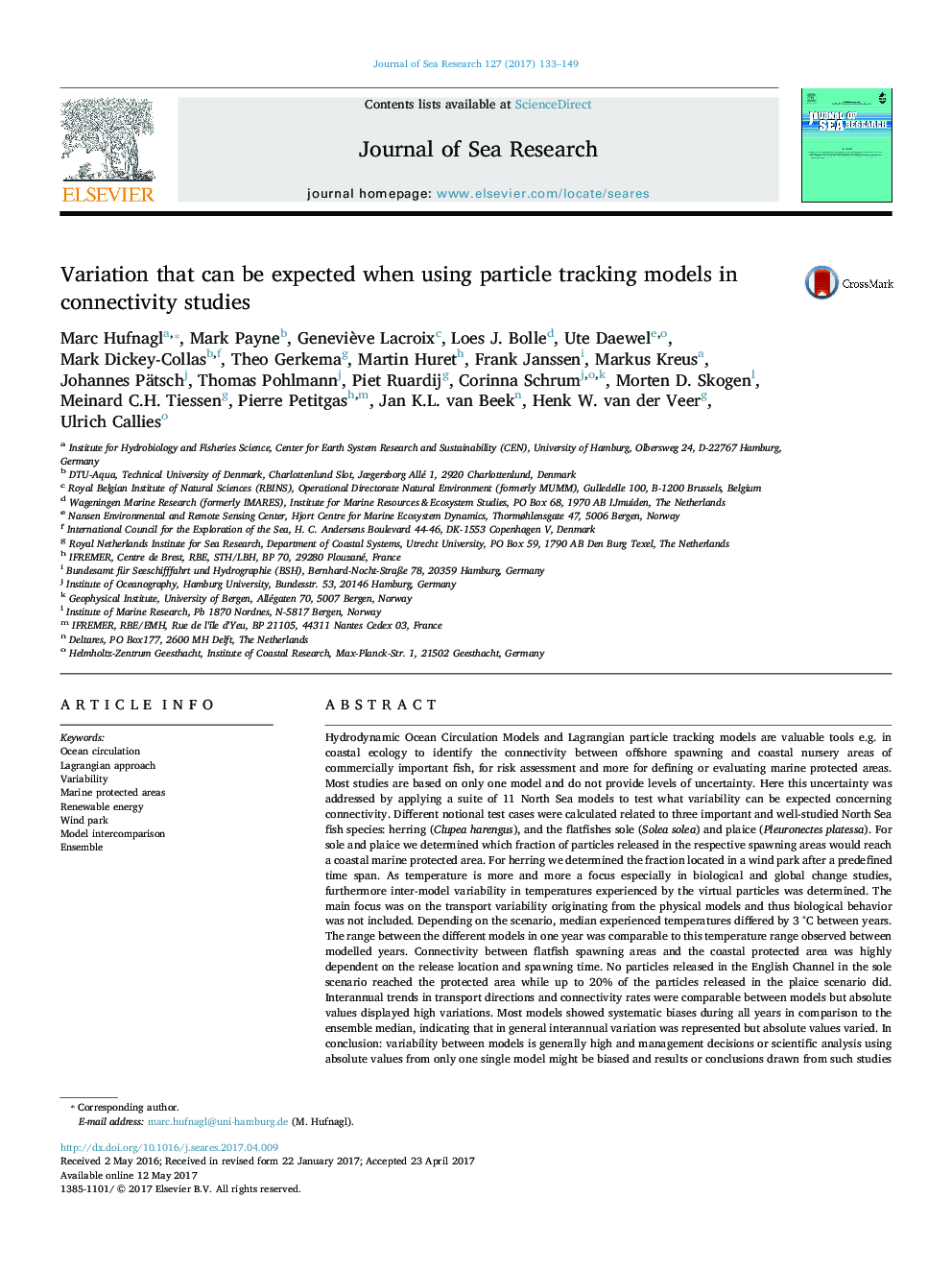| کد مقاله | کد نشریه | سال انتشار | مقاله انگلیسی | نسخه تمام متن |
|---|---|---|---|---|
| 5766098 | 1627448 | 2017 | 17 صفحه PDF | دانلود رایگان |
- A suite of ocean circulation and Lagrangian models were compared to determine inter-model uncertainty and variation.
- Absolute results (positions, temperatures, etc.) varied between models, but trends were comparable.
- More plaice than sole larvae reached a marine protected area although released in the same area but at different times.
- About 10% of all herring larvae released in the southern North Sea were located in a wind-park area when becoming juvenile.
Hydrodynamic Ocean Circulation Models and Lagrangian particle tracking models are valuable tools e.g. in coastal ecology to identify the connectivity between offshore spawning and coastal nursery areas of commercially important fish, for risk assessment and more for defining or evaluating marine protected areas. Most studies are based on only one model and do not provide levels of uncertainty. Here this uncertainty was addressed by applying a suite of 11 North Sea models to test what variability can be expected concerning connectivity. Different notional test cases were calculated related to three important and well-studied North Sea fish species: herring (Clupea harengus), and the flatfishes sole (Solea solea) and plaice (Pleuronectes platessa). For sole and plaice we determined which fraction of particles released in the respective spawning areas would reach a coastal marine protected area. For herring we determined the fraction located in a wind park after a predefined time span. As temperature is more and more a focus especially in biological and global change studies, furthermore inter-model variability in temperatures experienced by the virtual particles was determined. The main focus was on the transport variability originating from the physical models and thus biological behavior was not included. Depending on the scenario, median experienced temperatures differed by 3 °C between years. The range between the different models in one year was comparable to this temperature range observed between modelled years. Connectivity between flatfish spawning areas and the coastal protected area was highly dependent on the release location and spawning time. No particles released in the English Channel in the sole scenario reached the protected area while up to 20% of the particles released in the plaice scenario did. Interannual trends in transport directions and connectivity rates were comparable between models but absolute values displayed high variations. Most models showed systematic biases during all years in comparison to the ensemble median, indicating that in general interannual variation was represented but absolute values varied. In conclusion: variability between models is generally high and management decisions or scientific analysis using absolute values from only one single model might be biased and results or conclusions drawn from such studies need to be treated with caution. We further concluded that more true validation data for particle modelling are required.
Journal: Journal of Sea Research - Volume 127, September 2017, Pages 133-149
